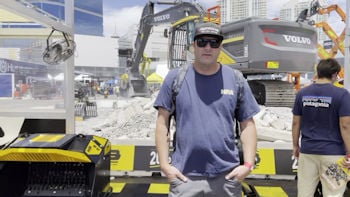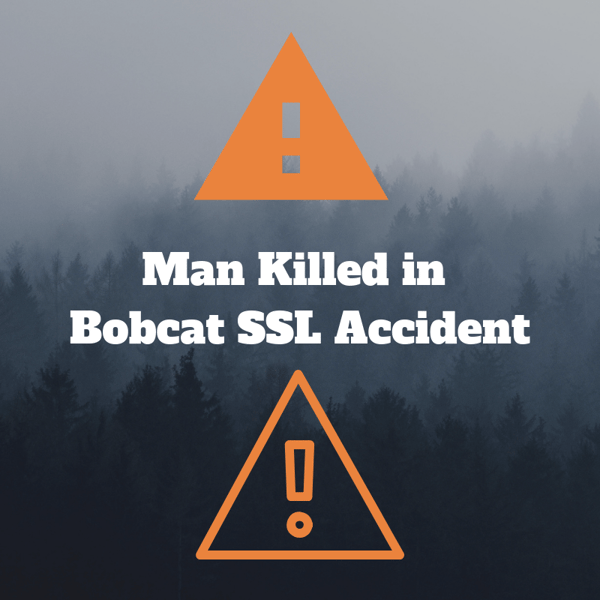Selecting the right concrete pulverizer for your mobile crushing operation

What is a concrete pulverizer?
A concrete pulverizer is an attachment for your excavator that will break the concrete into small pieces and cut through the embedded rebar, allowing the concrete to fall to the ground rather than hang onto the rebar. It consists of a stationary jaw and moveable jaw. This allows operator to pick up concrete slabs, walls, and bridge deck to crush them through compression. There are 2 main concrete pulverizer types – a mechanical pulverizer and a hydraulic pulverizer.
Considerations for selecting the right concrete pulverizer
When selecting a concrete pulverizer you need to look at the following parameters
- What size excavator do I have? A key factor is your excavator weight and hydraulic requirements. You need either find an attachment that fits to your carrier or get a carrier that fits your attachment. The attachment and carrier size depend on the type of jobs you do and the material you need to process. The larger the attachment the larger piece you can grab and crush down.
Most of that is usually identified with a dealer specialist who helps you find the right model for your excavator.
- Does my excavator have additional plumbing? If not, a hydraulic pulverizer might not be the right option. Of course, your excavator can be retroffited with a pumbing kit which adds to your investment costs. Cylinder powered concrete pulverizer attachments have a bigger breaking force and handle thicker concrete better. The larger the cylinder, the more powerful the tool. If you don’t have the option to get an excavator with the additional plumbing a mechanical pulverizer is an option to get started as well.
- What type of concrete material do I generate? If your material is 100% controlled through you and you deal with light demo material such as patio slabs and sidewalk a mechanical pulverizer might be just right. In case you get more into heavy-duty demolition material with lots or rebar a hydraulic pulverizer provides the additional breaking force to get the rebar out.
- What is your budget? A mechanical pulverizer is an economical way to preprocess concrete because it comes with fewer components and has a much simpler design than a hydraulic pulverizer.
| Mechanical pulverizer | Hydraulic pulverizer |
| ➕ Simple design | ➕ Bigger breaking force |
| ➕ Good for flatwork | ➕ Replaceable teeth (vs hardfacing) |
| ➕ Low cost | ➕ Cutting tool for rebar |
| ➕ No additional plumbing required | ➖ Additional plumbing required |
| ➖ Less breaking force | ➖ Higher cost |
| ➖ Hardfacing of teeth required | |
| ➖ Unusual stress on the cylinder | |
| ➖ Hardfaced teeth will wear faster |
Do I need a rotating function for my hydraulic concrete pulverizer?
A rotating function is not necessary to preprocess concrete. It adds cost but not benefit as your material that you need to process is right in front of you.
Can I use hydraulic hammers as well?
Yes, hydraulic hammers are also suited to preprocess concrete for crushing. However, it is a much longer and more tedious process to sort and prep a large concrete pile. If you crush concrete constantly, a hydraulic pulverizer is worth the investment, Hammers are more suited for demolition and breaking hard rock than sorting through a concrete pile.
Concrete prep is key to any concrete crushing operation
No matter if you run a jaw crusher or impact crusher – if it doesn’t fit it will stop your production and you start losing money.
For instance, if an oversize concrete slab gets wedged in before the crusher inlet and you spend 15 min to resolve the issue. Your crush on average at a 160 TPH. A 15 minute downtime means you are losing 40 tons of material. Assuming your material price is $8 per ton this equates to a $320 loss in 15 minutes. Additionally, your crusher, your excavator, and your stacking conveyor are ideling.
Pulverizing your concrete is time well spent
While you prepare a concrete pile with a concrete pulverizer you downsize you material and liberate rebar. Rebar and any uncrushable objects can be set aside. The cutting tool on your hydraulic pulverizer helps you to cut long strands of rebar.
“If rebar is too long it will build a bird’s nest in your crusher!”
What is the best feed size for my crusher?
Crusher feed size depends on the crusher type and material hardness. Generally, speaking you want to pulverize concrete to a size where it is very unlikely to bridge up in front of the crusher because interruptions cost you money.
“As a rule of thumb: the feed size should be 80% of your crusher inlet opening.”
While prepping the material you can set uncrushables aside for further processing. This could require a hoe ram to break big pieces or cutting long strands of rebar with the cutting tool of your hydraulic pulverizer.
“As a rule of thumb: the rebar should be encapsulated in the concrete and shouldn’t stick out longer than 4 ft to avoid any blockages.”

